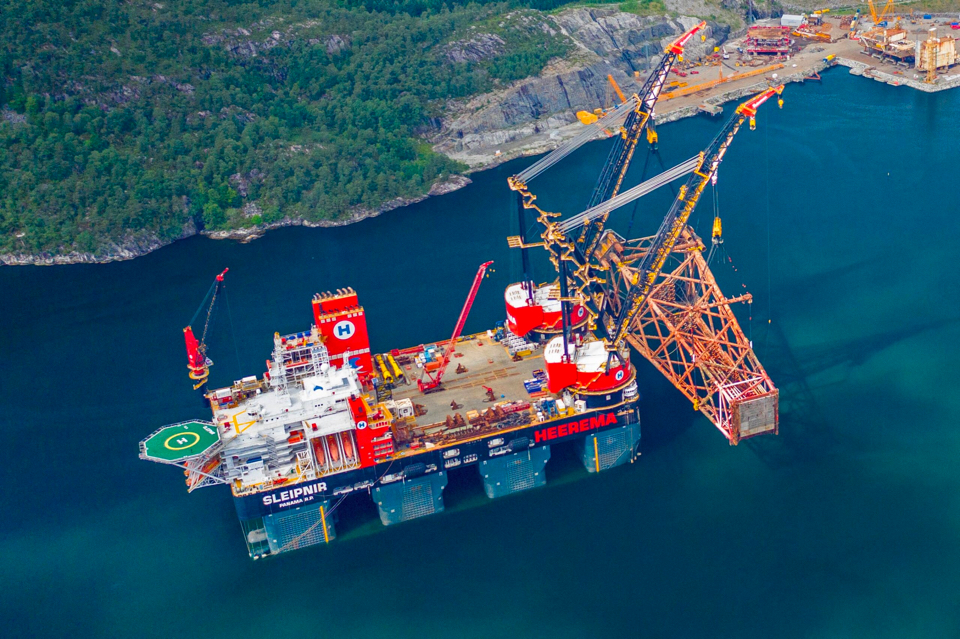Heerema’s semi-submersible crane vessel Sleipnir has removed the 8100-metric-tonne Jotun-B jacket in the Norwegian North Sea for Vår Energi. During this project, skirt piles with diameters of 2.7 metres and 80 millimetres wall thickness were cut subsea, the largest ever done in this way.
For the jacket removal, Sleipnir arrived at the Jotun Field located 200 kilometres west of Stavanger on Friday, July 11, and completed the project by offloading the jacket onto the quayside at the AF Miljøbase decommissioning site in Vats, Norway on Thursday, July 16.
The decommissioning work was completed safely, sustainably, and one day ahead of schedule. The entire removal scope in the Jotun Field was completed in only four days. For this project, Heerema had fabricated a 40-metre long spreaderbar within 2 millimetres tolerance for a tight, but perfect fit.
‘We set records to break them, and we are proud to have worked alongside our client Vår Energi to complete the Jotun-B removal with mighty Sleipnir safely, sustainably, and in the shortest possible time,’ said Heerema’s CEO, Koos-Jan van Brouwershaven.

The platform was installed in 1998 by Heerema’s Thialf, who returned to the Jotun Field last year to remove the topsides and conductors. Now that the Jotun-B jacket has been transported to Vats, it will end its lifecycle by being recycled up to 99 per cent.
Removal operations on LNG
Sleipnir is the world’s most sustainable SSCV, and during the project, the vessel performed the full removal operations while running on emission-reducing LNG fuel. By using LNG, Sleipnir reduces CO2 emissions by 25 per cent, NOx emissions by 92 per cent, SOx emissions by 99 per cent, and Particulate Materials by <99 per cent compared to traditional marine gas oil crane vessels.
It is essential to note that all companies involved followed the strict government guidelines to protect their workforces during the ongoing Covid-19 outbreak.









